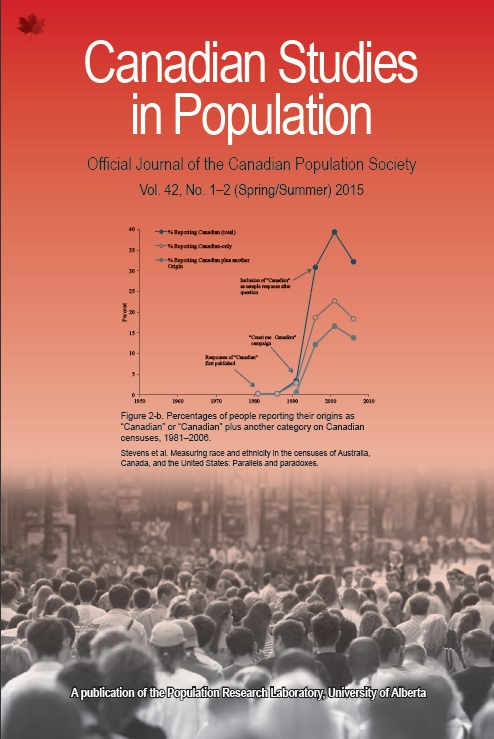Measuring race and ethnicity in the censuses of Australia, Canada, and the United States: Parallels and paradoxes
DOI:
https://doi.org/10.25336/P6PW39Keywords:
Census, Measurement, race, ethnicityAbstract
Most national censuses include questions about race, colour, national origins, ethnicity, ancestry, and tribe in an effort to describe subgroups within their population. In this paper, we focus on changes over the last half-century in the racial and ethnic classification schemes of the censuses in three countries that share important historical and demographic features Australia, Canada, and the United States. We show that there are similarities, as well as some idiosyncratic features, in how these three nations define and describe racial and ethnic subgroups. We then argue that the gathering of data on the racial/ethnic subgroups in these three nations has followed a similar progression over the last half-century because of shifts in the understanding of race and ethnicity, data-gathering procedures, and the ongoing dialogue between each national population and its data-gathering institution.
Downloads
Published
Issue
Section
License
Copyright (c) 2019 Gillian Stevens, Hiromi Ishizawa, Douglas Grbic

This work is licensed under a Creative Commons Attribution 4.0 International License.
The following copyright statement applies to content published in Volumes 1 - 45 of Canadian Studies in Population.
Authors retain copyright and grant the journal right of first publication with the work simultaneously licensed under a Creative Commons Attribution License that allows others to share the work with an acknowledgement of the work's authorship and initial publication in this journal.
Authors are able to enter into separate, additional contractual arrangements for the non-exclusive distribution of the journal's published version of the work (e.g., post it to an institutional repository or publish it in a book), with an acknowledgement of its initial publication in this journal.
Authors are permitted and encouraged to post their work online (e.g., in institutional repositories or on their website) prior to and during the submission process, as it can lead to productive exchanges, as well as earlier and greater citation of published work (See The Effect of Open Access).



